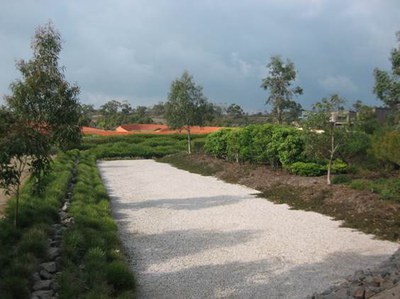
Professor Meyer is widely recognized for her theoretical writings about the intersection of modern conceptions and experiences of nature, environmental ethics, and contemporary landscape design. Her recent publications include “Sustaining Beauty. The Performance of Appearance,” “Slow Landscape. A New Erotics of Sustainability,” “Grafting, splicing, hybridizing: Strange beauties of the Australian Garden” and “Beyond Sustaining Beauty: Musings on a Manifesto.” During a 2016–17 sabbatical, she is completing a book manuscript, The Margins of Modernity. Theories and Practices of Landscape Architecture.
In 2015, Meyer founded the UVA Center for Cultural Landscapes, a transdisciplinary initiative. Since Meyer’s graduate studies in landscape architecture and historic preservation, she has been fascinated by the thick description of landscapes—places replete with cultural memories and biophysical processes. This perspective has afforded her opportunities to research, interpret, plan and design significant cultural landscapes such as the UVA Academical Village (EDAW 1980s), Bryant Park in NYC (Laurie Olin 1980s), the Wellesley College campus outside of Boston (MVVA 1990s), the St. Louis Gateway Arch Grounds, a modernist memorial landscape designed by Saarinen and Kiley (MVVA 2000s), and the White House Kitchen Garden (NPS 2016).
Meyer is a registered landscape architect who has worked for EDAW, Hanna/Olin, and Michael Vergason. She taught at Cornell University and Harvard GSD before joining the UVA faculty in 1993 where she teaches design studios and theory courses. She has served as the School of Architecture’s Dean as well as the Department of Landscape Architecture Chair. Meyer currently holds a Presidential appointment to the US Commission of Fine Arts, a seven member design review board responsible for Washington, DC’s monumental core and significant public spaces.